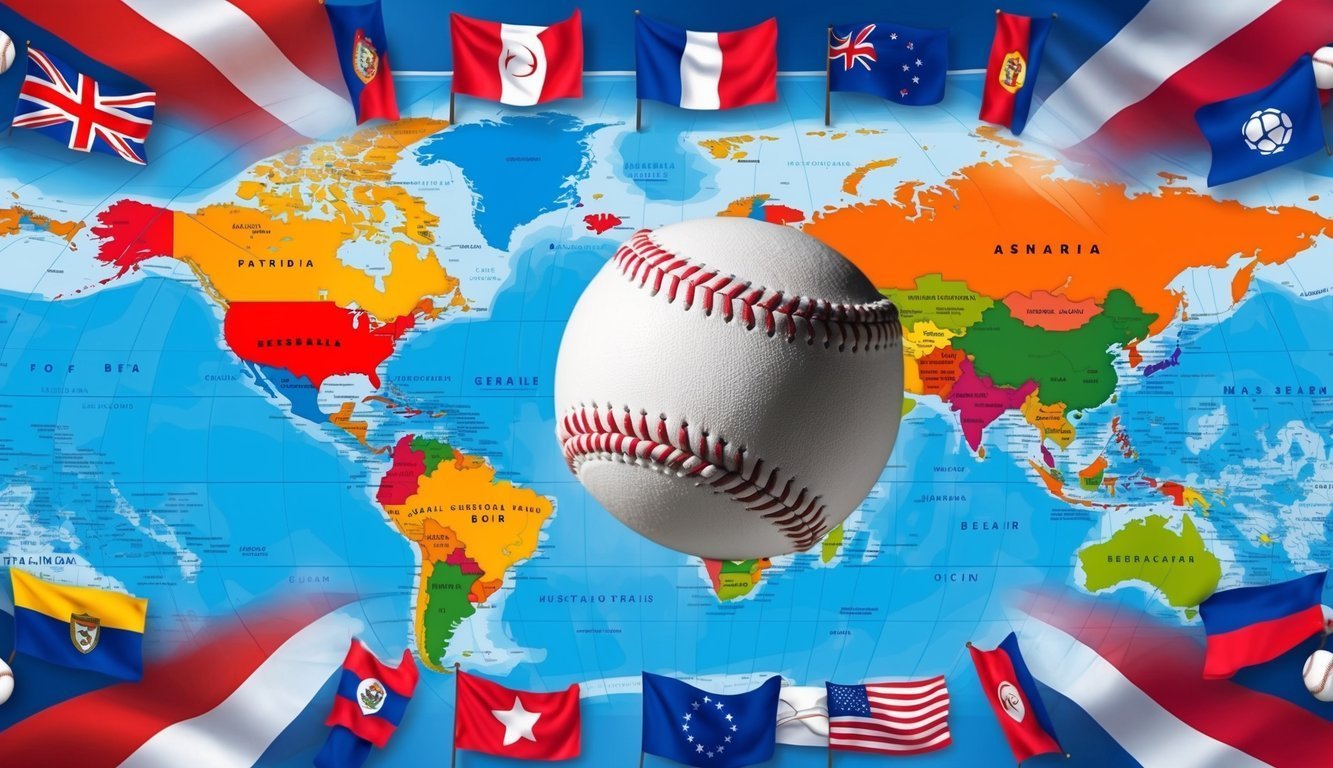Baseball has transcended its American roots to become a truly global sport.
From the Caribbean to East Asia, talented players from around the world now grace Major League Baseball (MLB) fields, enriching the game with diverse skills and cultures.
The globalization of baseball has transformed MLB into an international powerhouse.
In recent seasons, foreign-born players made up nearly 30% of active rosters.
This global expansion has reshaped the sport industry, creating new markets for baseball-related products and fostering passionate fan bases in countries far beyond North America.
MLB’s international reach has led to the establishment of academies in Latin America, partnerships with Asian leagues, and marquee events like the World Baseball Classic.
As a result, fans benefit from an increasingly competitive and exciting product on the field.
The influx of international talent has raised the overall level of play, while introducing new styles and approaches to the game.
This global melting pot of baseball talent continues to push the boundaries of what’s possible on the diamond, captivating audiences worldwide.
Historical Development of Globalization in Baseball
Baseball’s global expansion has been a gradual process spanning over a century.
The sport’s international reach grew through early cross-border influences and the rise of international competitions.
Early Expansion and Influence
Baseball’s global journey began in the late 19th century.
American sailors and soldiers introduced the game to countries like Japan, Cuba, and the Philippines.
In Japan, baseball quickly gained popularity after its introduction in 1872.
The sport became deeply ingrained in Japanese culture, leading to the formation of professional leagues.
Cuba embraced baseball in the 1860s.
The island nation developed a rich baseball tradition, producing many talented players.
Cuban stars like Minnie Miñoso and Tony Oliva paved the way for future Latin American players in Major League Baseball (MLB).
Rise of International Competitions
The 20th century saw the emergence of international baseball tournaments.
The first Baseball World Cup took place in 1938, featuring teams from North America, Europe, and Asia.
This event helped spread the game’s popularity globally.
The World Baseball Classic, launched in 2006, marked a significant milestone.
It brought together professional players from around the world, showcasing baseball’s global talent pool.
The tournament has featured teams from Asia, Europe, the Americas, and Oceania.
MLB’s efforts to host games abroad have further boosted baseball’s international profile.
Regular-season games have been played in countries like Japan, Australia, and Mexico, expanding the sport’s reach and fan base.
Global Baseball Economics and Business Models
Baseball’s economic landscape has evolved dramatically as the sport expands globally.
Professional leagues generate diverse revenue streams while marketing efforts aim to grow the game’s worldwide appeal.
Professional Leagues’ Revenue Streams
Major League Baseball (MLB) and other top leagues rely on various income sources.
TV and streaming deals form a significant portion, with MLB securing lucrative contracts with national and regional networks.
Game attendance remains crucial, though ticket sales have fluctuated in recent years.
Merchandising offers another vital revenue stream.
Fans worldwide purchase jerseys, caps, and other branded items.
MLB’s international popularity boosts merchandise sales across global markets.
Sponsorships play a key role too.
Companies pay handsomely to associate with baseball’s image and reach its fanbase.
Stadium naming rights deals often yield substantial long-term income for teams.
Marketing and Promoting Baseball Worldwide
MLB actively markets itself globally to expand its fanbase and revenue potential.
The league hosts regular-season games in various countries, showcasing the sport to new audiences.
These international series generate buzz and media coverage.
Digital platforms have become central to baseball’s marketing strategy.
MLB’s streaming service allows fans worldwide to watch games live or on-demand.
Social media engagement helps teams and players connect with supporters across borders.
Baseball video games and fantasy leagues engage fans year-round.
These products introduce the sport to younger audiences and deepen existing fans’ connection to the game.
Grassroots initiatives promote baseball at youth levels internationally.
MLB supports programs and clinics in countries like China and Europe to nurture talent and grow interest in the sport.
Cultural Impact and the Sociology of Baseball
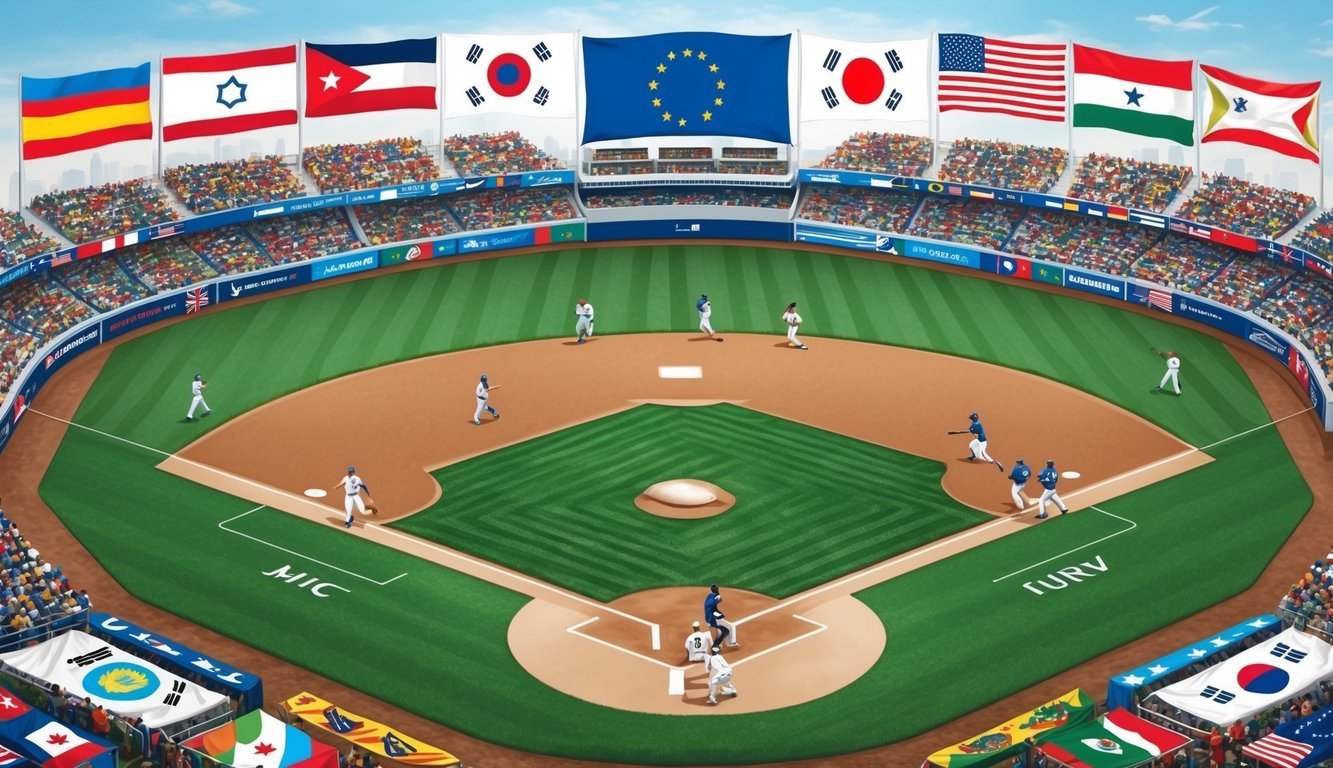
Baseball’s global spread has intertwined the sport with diverse cultures worldwide.
Its influence extends far beyond the playing field, shaping social dynamics and national identities.
Baseball as a Cultural Export
American baseball has become a significant cultural export.
The sport’s popularity in Latin America, East Asia, and parts of Europe reflects its ability to transcend borders.
In Japan, baseball has evolved into a national pastime, with unique rituals and fan behaviors.
MLB’s international expansion has introduced American-style baseball to new audiences.
This has led to cultural exchanges, with players from various countries bringing their styles and traditions to the U. S. leagues.
These exchanges have not only enriched the game but have also fostered a sense of global community among fans and players alike.
As the sport continues to evolve, future technological innovations in baseball are set to enhance training techniques and fan engagement, making the game more accessible to a diverse audience.
The integration of advanced analytics and virtual reality also promises to change how both players and fans experience the sport, ushering in a new era for Major League Baseball.
The sport often serves as a bridge between cultures.
International tournaments like the World Baseball Classic foster a sense of global community among fans and players alike.
Adoption and Adaptation of Baseball in Different Cultures
Different nations have embraced baseball in unique ways.
In Cuba, the sport is deeply tied to national identity and political history.
Japanese baseball emphasizes teamwork and discipline, reflecting broader cultural values.
South Korea has developed a vibrant baseball culture with enthusiastic fan participation.
The sport’s growth in Europe has been slower but steady, with countries like Italy and the Netherlands developing competitive national teams.
In some regions, baseball has merged with local traditions.
For example, pesäpallo in Finland is a baseball-like sport with distinct rules and gameplay adapted to local preferences.
The globalization of baseball has also influenced product marketing and consumption patterns.
Baseball caps and merchandise have become fashion statements worldwide, often divorced from their sporting origins.
Influence of Baseball on International Relations
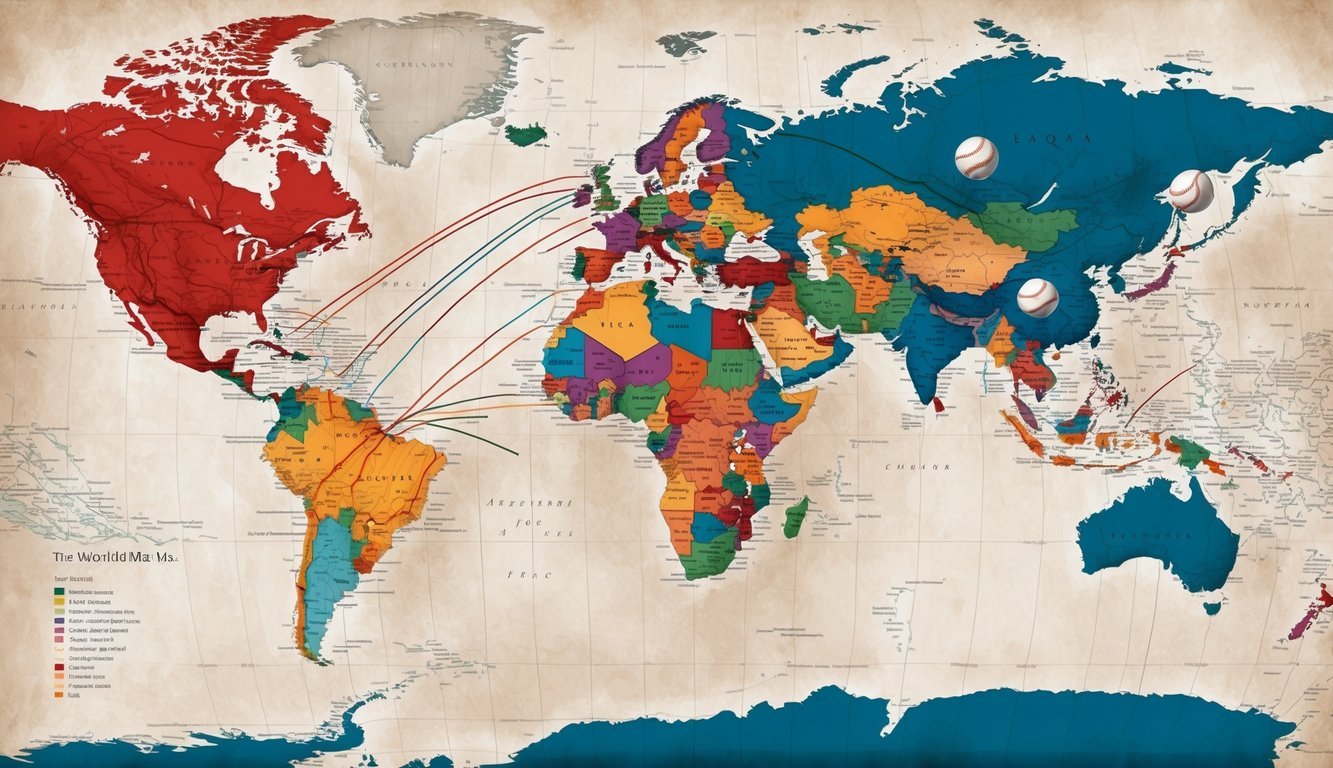
Baseball has played a significant role in shaping diplomatic ties and economic interactions between nations.
The sport’s global popularity has made it a powerful tool for fostering goodwill and facilitating cross-cultural exchanges.
Role of Baseball in Diplomacy
Baseball has served as a bridge between countries, helping to ease tensions and promote understanding.
In 1971, the U.S. and China engaged in “ping-pong diplomacy,” but baseball has played a similar role.
MLB teams have visited Cuba, fostering dialogue between the two nations.
Japanese baseball has strengthened U.S.-Japan relations.
Regular exchanges between MLB and Nippon Professional Baseball have enhanced cultural ties and mutual respect.
South Africa used baseball to help unite the country post-apartheid.
The sport provided common ground for diverse communities to come together and heal.
Baseball and Political Economy
Baseball’s economic impact extends far beyond ticket sales and merchandise.
The sport has become a significant factor in international trade and labor markets.
The Dominican Republic has leveraged its baseball talent to boost its economy.
MLB academies provide opportunities for young players and inject millions into the local economy.
Japan’s baseball industry has fostered economic ties with the U.S. Japanese companies sponsor MLB teams, while American firms invest in Japanese baseball.
The MLB’s expansion into Europe has opened new markets.
Games in London have sparked interest in baseball across the European Union, creating new revenue streams.
The Pathway to Professional Baseball
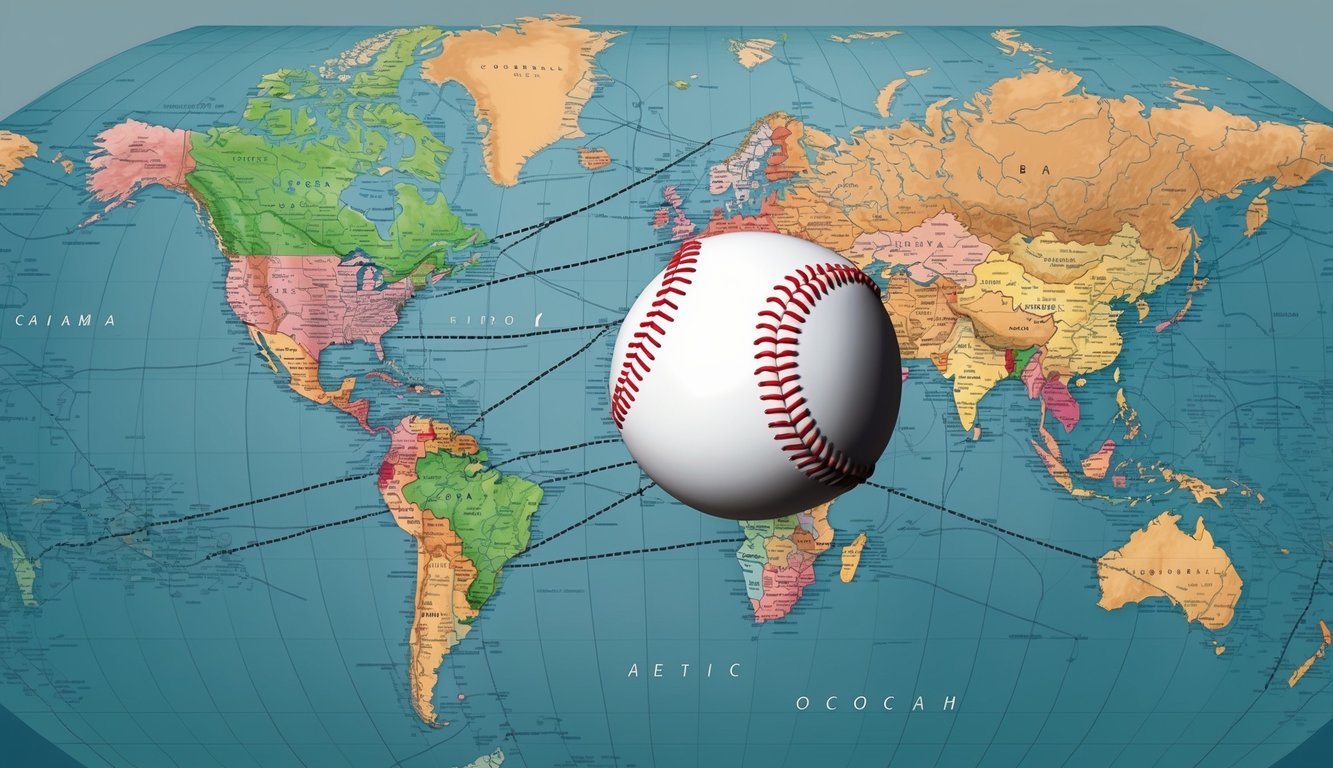
Aspiring baseball players face a complex journey to reach the professional ranks.
This path involves rigorous talent identification, extensive development programs, and often international migration.
Talent Identification and Development
Scouts constantly search for promising young players across the globe.
In the U.S., high school and college programs serve as primary talent pipelines.
The Dominican Republic has become a hotbed for baseball prospects, with dedicated academies nurturing talent from an early age.
MLB teams invest heavily in player development facilities.
These complexes offer state-of-the-art training, nutrition, and coaching.
Many organizations now run programs in countries like Venezuela, Japan, and South Korea.
Some nations, like Cuba, have their own robust development systems.
Players from these countries often face unique challenges when pursuing MLB careers.
Migration and Labor Markets in Baseball
International players make up a significant portion of MLB rosters.
Latin American countries, particularly the Dominican Republic and Venezuela, contribute heavily to this talent pool.
The “Dominican dream” of reaching the majors drives many young athletes.
Buscones (local scouts/agents) play a crucial role in connecting prospects to MLB teams.
African American representation in MLB has declined in recent decades.
This trend has sparked initiatives to increase youth participation in urban areas.
Emerging baseball markets like Ghana show potential for future talent growth.
MLB has invested in development programs in Africa to tap into this resource.
Player agents navigate complex international regulations to facilitate player movement.
Work visas and contract negotiations are key aspects of the migration process.
Baseball’s Future Growth and Challenges
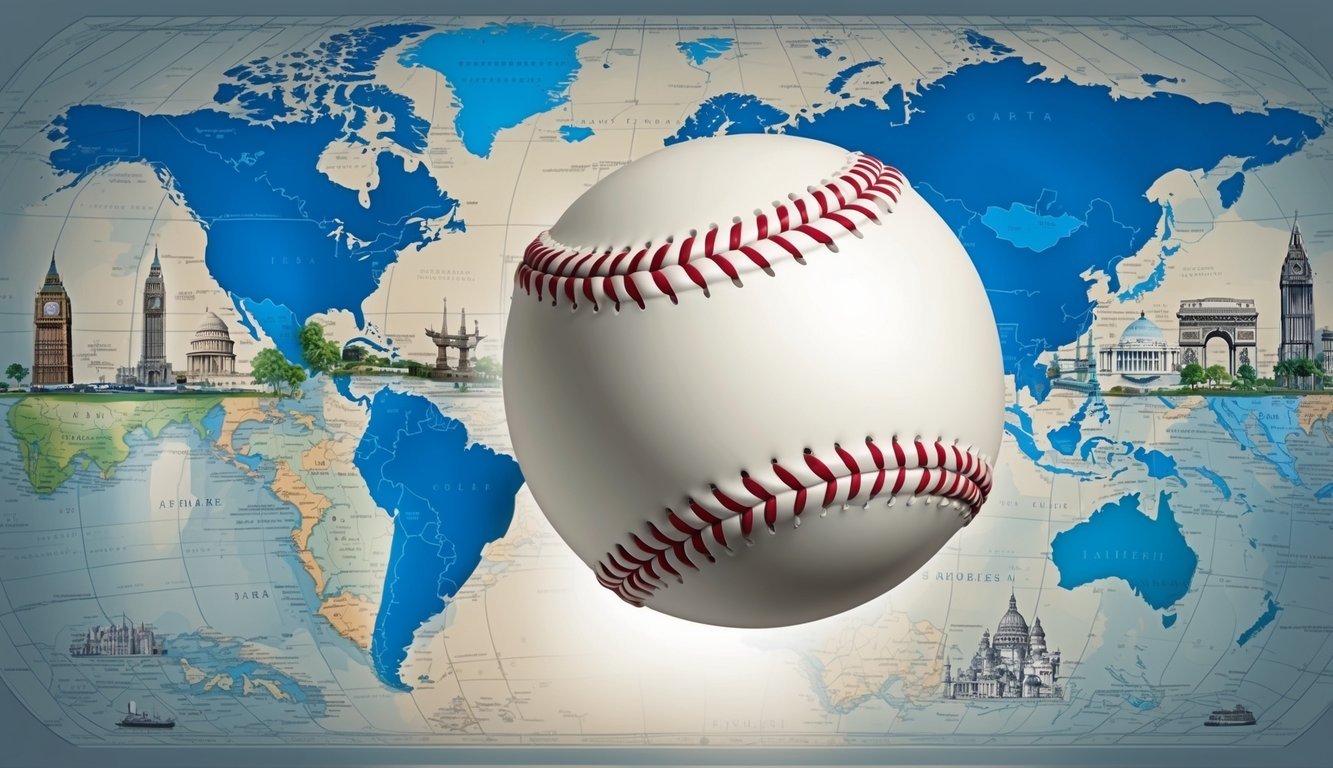
Baseball’s global expansion faces both opportunities and obstacles.
The sport aims to reach new audiences while addressing unique challenges in emerging markets.
Expanding the Game’s Reach and Engagement
MLB seeks to grow baseball’s popularity worldwide.
The league partners with local organizations to introduce the sport to new regions.
Youth programs in countries like Australia and South Africa help cultivate young talent and fan interest.
The Los Angeles Dodgers and Kansas City Royals have hosted international camps and clinics.
These initiatives expose more kids to baseball fundamentals.
Social media and streaming platforms make games accessible to global audiences.
MLB also explores exhibition games in non-traditional markets.
These events generate buzz and showcase top talent to potential new fans.
The World Baseball Classic continues to be a key vehicle for promoting international competition.
Addressing Emerging Market Challenges
Baseball faces hurdles in countries where it lacks deep roots.
Limited infrastructure and competition from established sports pose difficulties.
MLB invests in building fields and providing equipment to spark interest.
Cultural differences impact how the game is perceived and played.
Adapting marketing strategies to resonate with local audiences is crucial.
Language barriers require thoughtful solutions in broadcasts and fan engagement.
The Pacific Professional Baseball Leagues serve as a model for regional growth.
These leagues foster talent development and create sustainable local interest.
MLB supports these efforts to build a strong global baseball ecosystem.
Attracting and retaining fans remains a priority.
Efforts to speed up gameplay aim to appeal to younger, attention-challenged audiences.
Interactive fan experiences at ballparks help boost attendance and engagement.
